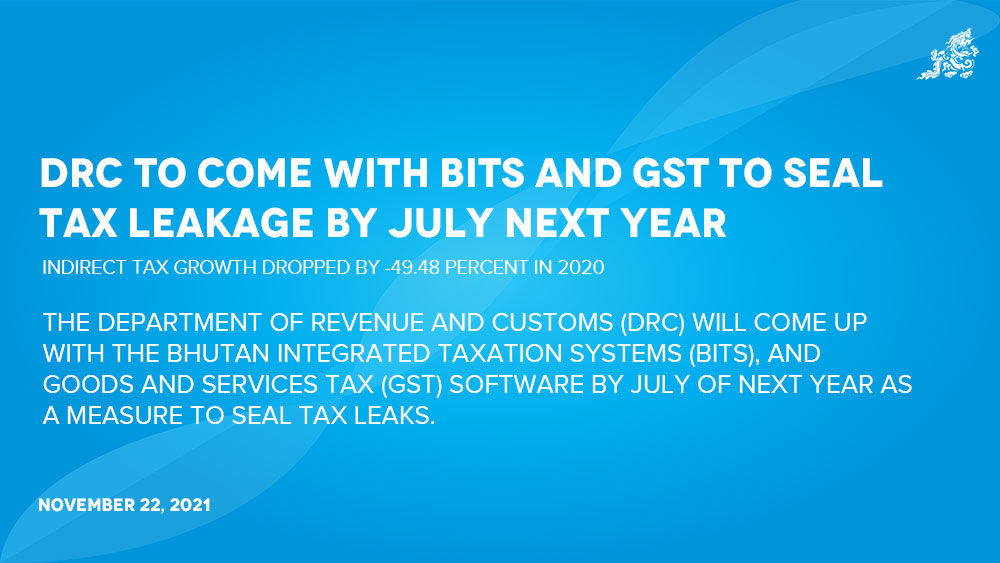Indirect tax growth dropped by -49.48 percent in 2020
Thukten Zangpo
The Department of Revenue and Customs (DRC) will come up with the Bhutan Integrated Taxation Systems (BITS), and Goods and Services Tax (GST) software by July of next year as a measure to seal tax leaks.
The Director-General of DRC, Wangchuk Thayey said that BITS and GST will ensure an input credit system and will record all aspects of the supply chain.
For instance, if the goods are imported from India, wholesalers and retailers have to register with the GST system and pay taxes. However, they will get a refund upon selling it to the consumers.
When the GST is implemented, the contemporary sales tax will be replaced by a modern GST, subsuming the existing 11 multiple tax rate structures (ranging from 0 percent to 100 percent) into a single standard rate of 7 percent. The GST Act 2020 is expected to come into force by July 1 of next year.
According to the National Accounts Statistics 2021, taxes on products (indirect taxes) net of subsidies growth dropped to -49.48 percent in 2020 as compared to the previous year. At Nu 4.596 billion (B), the drop was one of the highest within the past 19 years.
Indirect tax’s contribution to the gross domestic product (GDP) also saw a drop by 2.01 percent in 2020. It contributed 2.68 percent to GDP.
The drop in taxes on products was because of the fall in the collection from import duty and excise duty.
“With the lockdown in Phuentsholing and imports limited to only essential commodities (non-taxable items), the flow of trade was atypical,” Wangchuk Thayey said.
In 2020, the department came up with a paperless and zero contact clearance drop box system at the mini-dry port (MDP) in Phuentsholing where 95 percent of trade takes place in the country.
Indian drivers ferrying Bhutanese consignments up to the MDP drop the invoices and other clearance documents in the drop box, Wangchuk Thayey said, adding that the vehicles are cleared immediately and clearance documents are checked the next day.
He added that there have been a few cases in which people have dropped empty envelopes. “There have been lots of tax evasion and leaks.”
The next measure was customs officials using UV-rays for screening documents, as proposed by the Ministry of Health.
Wangchuk Thayey said that the department has purchased four UV-ray machines to scan the documents. “It did not work, as five customs officials from the MDP tested positive for Covid-19,” he added.
The department came up with the online vehicle registration system (VRS). Using the system, clearing agents print import invoices sent from the exporters in India, which then are physically verified by customs officials.
Recently, the department has replaced the VRS with a customs road cargo manifest system. To further enhance the system, an electronic Customs Management Systems is expected to launch in early August of next year.
However, Wangchuk Thayey said that given the sheer number of customs officials involved in checking vehicles and following the Covid-19 protocols, it is difficult to regulate.
“Although, some of the import invoices reflect as non-taxable, upon physical verification, the items would be taxable,” he said adding that it takes at least three hours to check a truckload of goods.
The government hopes to recoup an additional revenue of Nu 3B with the implementation of the GST.


